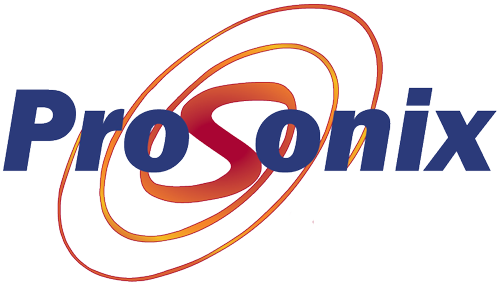Biogas Production
 More and more agricultural and dairy farms as well as beef, hog and poultry operations are considering the use of anaerobic digestion for biogas production. These operations typically produce a significant amount of organic matter in the form of manure. Anaerobic digestion is a biological process that breaks down organic solids. Manure can be processed in anaerobic digesters and the byproduct is methane gas. The methane gas can be captured, stored and used to run electrical generators and boilers for use in the farm operations. Heat exchangers can face the following challenges when heating sludge:
More and more agricultural and dairy farms as well as beef, hog and poultry operations are considering the use of anaerobic digestion for biogas production. These operations typically produce a significant amount of organic matter in the form of manure. Anaerobic digestion is a biological process that breaks down organic solids. Manure can be processed in anaerobic digesters and the byproduct is methane gas. The methane gas can be captured, stored and used to run electrical generators and boilers for use in the farm operations. Heat exchangers can face the following challenges when heating sludge:
| How biomass works |
- Live steam used to provide heat for heat exchangers creates hot spots where sludge can burn and build-up plugging the heat exchanger tubes. This increases maintenance costs and an increased pressure drop across the heat exchanger
- Upgrading from mesophillic to thermophilic often require multiple heat exchangers in series to achieve the necessary temperature rise
- Increased pressure drop adds demand to the sludge pumps thus increasing energy usage
- Temperature control problems can be present as there is a lag time from slurry entering and then being discharged
To overcome these challenges, Direct Steam Injection (DSI) is a very good approach. There are correct ways to apply DSI and approaches that may not produce desirable results. One of the key factors to successful DSI is to inject steam at sonic velocity to achieve choked flow.
Spargers, Fixed Eductors &Venturi Style DSI
These units use a fixed nozzle to inject steam. Steam control is attempted via an externally modulated steam control valve. With an externally modulated steam injecton the steam pressure is adjusted to control the flow rate of steam with a control valve.
Problems arise when the steam pressure has dropped to a point where the steam flow is no longer choked. This can be seen most often at start up and shutdown of externally modulated steam injectors in the form of noise, vibration and hammering. With an external steam valve, there is always a pressure drop before the steam reaches the injector.
| Eliminate Steam Hammer | |
The use of external steam control devices to control the steam flow by modulating the steam pressure can lead to excessive steam hammering and vibration. Steam hammering and vibration often result from poor mixing and condensing of the steam. As temperature demand drops, steam pressure drops, lowering the steam velocity and potentially causing instability. Uncondensed steam bubbles will typically collapse when it comes in contact with a cold pipe wall in the liquid piping. When these bubbles collapse, the slurry rushes in to fill the void and impacts the pipe wall. In some cases this will result in some pinging noise and in severe cases, steam hammering and vibration.
PSX DSI Heater Solution
The PSX heater uses a unique method of steam injection via an integral steam control device. The key to efficient, safe and predictable steam injection is to inject steam at sonic velocity to achieve choked flow. All steam injectors need to operate in a choked flow manner for good, non-violent mixing. The PSX heater is an internally modulated injection heater that varies the mass flow rate of steam by changing the area through which the steam may pass. This type of modulation allows the full steam pressure to always be present at the point of injection regardless of the plug position. The PSX heater has an integrated Pneumatic Actuator that allows the engineered steam diffuser opening to vary according to the temperature demand.
Flow rates can range from 1 – 5,000 gpm. The PSX heater has a high heating capacity and can achieve a temperature rise of up to 250°F (121°C) in a single pass through the heater.
Key PSX Heater Direct Steam Injection Benefits
- Stable operation due to the internal steam modulation design which controls the steam mass flow and not the steam pressure thus eliminating steam hammering and vibration issues
- Low maintenance due to the PSX heater’s self cleaning design
- Low pressure drop reduces demand on the sludge pumps lowering energy costs
- Better temperature control allows for a more reliable heating process (typically +/- 1%)
- Reduced installation and operational costs with the elimination of the condensate return system
- Direct mechanical control of the steam injector allows for linear process heating control
- Control is maintained by the plant PLC/DCS or local controller with no proprietary software required
- PSX heater can be installed in the piping requiring no floor space









 Biomass pretreatment is the initial stage of preparing hemicellulosic materials such as corn stover, grass, straw and wood fiber for ethanol conversion.
Biomass pretreatment is the initial stage of preparing hemicellulosic materials such as corn stover, grass, straw and wood fiber for ethanol conversion. The OptiShear jet cooker is designed for starch cooking, wet mill processing of starch, ethanol production and fructose and alcohol production. ProSonix’s unique method of direct steam injection utilises internal steam modulation via an integral Pneumatic Actuator and variable position steam plug, to accurately meter the mass flow of steam, through choked flow conditions. ‘Choked flow’ is the phenomenon of accelerating a vapor to maximum velocity by creating a pressure differential through an engineered opening. By establishing choked flow, the steam mass flow can be metered to precisely control the heating of the liquid. This produces predictable results based on the position of the steam plug. Through a variable-area steam diffuser, steam flow is metered at the point where steam and liquid first contact and mix.
The OptiShear jet cooker is designed for starch cooking, wet mill processing of starch, ethanol production and fructose and alcohol production. ProSonix’s unique method of direct steam injection utilises internal steam modulation via an integral Pneumatic Actuator and variable position steam plug, to accurately meter the mass flow of steam, through choked flow conditions. ‘Choked flow’ is the phenomenon of accelerating a vapor to maximum velocity by creating a pressure differential through an engineered opening. By establishing choked flow, the steam mass flow can be metered to precisely control the heating of the liquid. This produces predictable results based on the position of the steam plug. Through a variable-area steam diffuser, steam flow is metered at the point where steam and liquid first contact and mix.